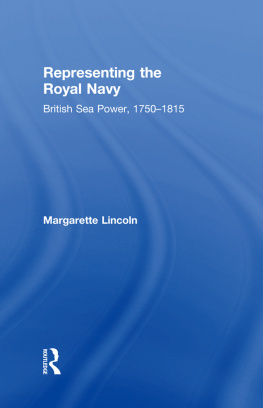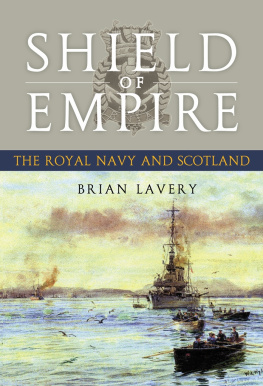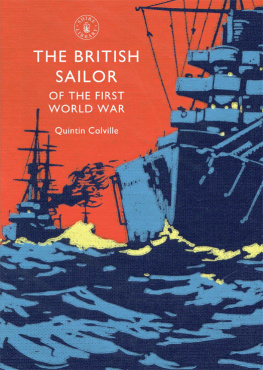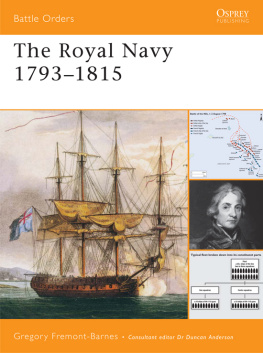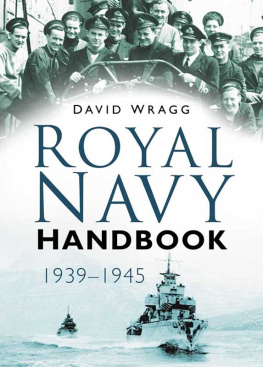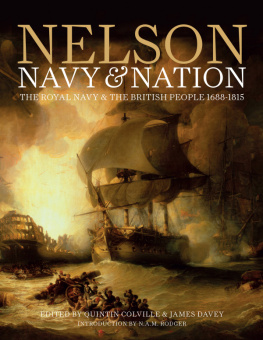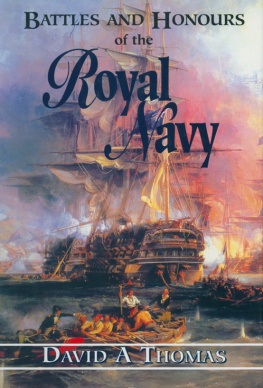REPRESENTING THE ROYAL NAVY
To the memory of my mother, Mary Smith
Representing the Royal Navy
British Sea Power, 17501815
MARGARETTE LINCOLN
National Maritime Museum, UK
First published 2002 by Ashgate Publishing
First published 2016
2 Park Square, Milton Park, Abingdon, Oxon OX14 4RN
711 Third Avenue, New York, NY 10017
Routledge is an imprint of the Taylor & Francis Group, an informa business
Copyright 2002 Margarette Lincoln
The author has asserted her moral right under the Copyright, Designs and Patents Act, 1988, to be identified as the author of this work.
All rights reserved. No part of this book may be reprinted or reproduced or utilised in any form or by any electronic, mechanical, or other means, now known or hereafterinvented, including photocopying and recording, or in any information storage orretrieval system, without permission in writing from the publishers.
Notice:
Product or corporate names may be trademarks or registered trademarks, and are used only for identification and explanation without intent to infringe.
British Library Cataloguing in Publication Data
Lincoln, Margarette
Representing the Royal Navy: British sea power, 17501815
1. Great Britain. Royal NavyPublic opinion 2. Great
Britain. Royal NavyHistory18th century 3. Great
Britain. Royal NavyHistory19th century 4. Public
OpinionGreat Britain 5. Great BritainHistory, Naval
18th century 6. Great BritainHistory, Naval19th century
I. Title
359 .00941 09033
Library of Congress Cataloging-in-Publication Data
Lincoln, Margarette
Representing the Royal Navy: British sea power, 17501815 / Margarette Lincoln.
p. cm.
Includes bibliographical references and index (alk. paper)
1. Great Britain. Royal NavyInfluence. 2. Great Britain. Royal NavyHistory18th century. 3. Great Britain. Royal NavyHistory19th century. 4. Sea powerGrea BritainHistory18th century. 5. Sea powerGreat BritainHistory19th century.
I. Title
VA454 .L65 2002
359 .00941 09033
2002066468
ISBN 9780754608301 (hbk)
Typeset in Palatino by Pat FitzGerald
Contents
All illustrations are held in copyright by the National Maritime Museum, Greenwich
Jacket Illustration
A French Hail Storm, or Neptune Losing sight of the Brest Fleet, by J. Gillray (artist and engraver), H. Humphrey (publisher), 10 December 1793. NMM Repro. ID PW3926.
Black and White Figures
NMM Repro. ID PY0775.
NMM Repro. ID E36631.
NMM Repro. ID PZ5748.
NMM Repro. ID PU3899.
NMM Repro. ID PU3925.
NMM Repro. ID E1020.
NMM Repro. ID PW4018.
NMM Repro. ID PW3840.
Colour Plates
Plate 1: The Naval Nurse, or Modern Commander, by R. Attwold (artist and engraver). NMM Repro. ID PU4818.
Plate 2: Captain John Bentinck (17371775) and his son, William Bentinck (17641813), oil painting by Mason Chamberlin. Signed and dated 1775. NMM Repro. ID BHC2550.
Plate 3: How a Great Admiral with a Great fleet went a Great way, was lost a Great while, saw a Great sight & then came home for a little water. Published by S.W. Forres, 10 December 1793. NMM Repro. ID 3716.
Plate 4: A Correct View of the French Flat-Bottom Boats, intended to convey their Troops, for the Invasion of England, as seen afloat in Charante Bay in August 1803. Published by J. Fairburn, 17 August 1803. NMM Repro. ID PY7437
Plate 5a: Lloyds 50 Patriotic Fund Sword awarded to Lt Samuel Mallock, RM, for gallantry in 1805. NMM Repro. IDD486114a.
Plate 5b: Longcase clock by John Chance of Chepstow c. 1782, commemorating Rodneys victory at the Battle of the Saints in the American War of Independence. NMM Repro. IDD5705.
Plate 6: To the Memory of Lord Nelson. Plate 9 of Window Draperies. Produced by T. Shoalon (artist) and J. Badon (engraver), 6 Oct. 1806. NMM Repro. ID PU3902.
Plate 7: The Sailor, and the Field Preacher, by Thomas Rowlandson, 25 July 1805, Rudolph Ackermann (publisher). NMM Repro. ID PW3796.
Plate 8: A Sailor at a Quakers Funeral. George M. Woodward (artist), Isaac Cruikshank (engraver), Thomas Tegg (publisher). NMM Repro. ID PW3860.
Plate 9a: Leeds earthenware bowl and teapot, c. 1780, featuring portraits of Admiral Augustus Keppel. NMM Repro. ID D5526.
Plate 9b: Chelsea-Derby porcelain jug commemorating the Battle of the Saints, dated 1782. The lip is modelled as the head of Admiral George Rodney. NMM Repro. ID D5531.
Plate 10: Visit of George III to Howes Flagship, the Queen Charlotte, on 26 June 1794, oil painting by Henry Perronet Briggs (17921844). Greenwich Hospital Collection. NMM Repro. ID BHC0476. Greenwich Hospital Collection.
Plate 11a: Earthenware mugs and jugs commemorating Rodney and the Battle of the Saints, c. 1782. NMM Repro. ID D5537.
Plate 11b: Painted ivory lockets, celebrating Nelsons victory at the Battle of the Nile in 1798. NMM Repro. ID D5712.
Plate 12: Dresses La Nile respectfully dedicated to the Fashion Mongers of the day, October 1798. Published by W. Holland. NMM Repro. ID 3864.
Plate 13: Midshipman Blockhead. The Progress of a Midshipman exemplified in the career of Master Blockhead in seven plates & Frontispiece. Plate 1: Fitting out. Produced on 1 August 1835 by George Cruikshank (engraver), Thomas McLean (publisher). NMM Repro. ID PU4721.
Plate 14: Jack Hove Down With a Grog Blossom Fever. Published 12 August 1811 by X.Y. and Thomas Tegg (publisher). NMM Repro. ID PW3752.
Plate 15: Things as they have been. Things as they now are. Dedicated without permission to all whom it may concern or please by their obedt servt R. Bothsides. Published by C. Dyer, 8 May 1815. NMM Repro. ID PW3719.
Plate 16: The Battle of the Nile, by George Cruikshank (engraver), 1 July 1825. NMM Repro. ID PU4742.
This book examines changing representations of the British Navy from the Seven Years War (175663) to the end of the Napoleonic War (1815). There are many political and military histories of the Navy in this period that focus on key battles and personalities. Economic historians and those with an interest in labour relations have studied aspects of naval administration.1 More recently, there have been studies of the operation of the Navy and life at sea.2 These works consider the Navy as an organization with specific military objectives, logistical requirements, and operational problems. In contrast, this book considers the Navy as a cultural presence in the public sphere, a presence that circulates through, and is refracted by, specific media in the service of particular social and political interests. In this way the immediate operational aims and needs of the Navy can be seen in relation to the cultural mechanisms which helped to shape contemporary attitudes to its performance. By identifying the presence of the Navy as discourse and image, it is possible to clarify its place in the formation of public attitudes to war and peace, nation and empire, race and gender. The impact of war on society in this period continues to be a relatively neglected subject in spite of important works by distinguished scholars, including John Brewers account of the emergence of the fiscal-military state, Linda Colleys study of the forging of British national identity in the context of recurring war with France, J.E. Cooksons survey of the British nation under arms,3 and John Pecks account of how Britains success at sea was reflected in novels and helped to shape the political, social and cultural character of the nation.4 Perceptions of the Navy have been generally neglected in cultural studies of the period 17501815, and there is no detailed examination of how the image of British sea power was constructed and deployed in the public sphere. This book aims to help re-position naval history, illustrating its importance for interdisciplinary study, and drawing attention to little-used sources.


